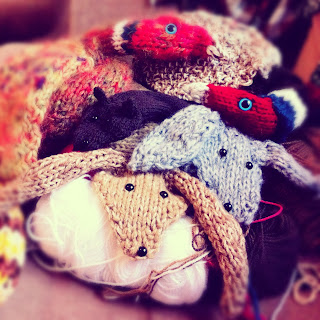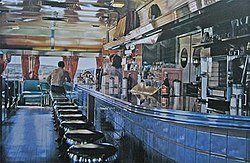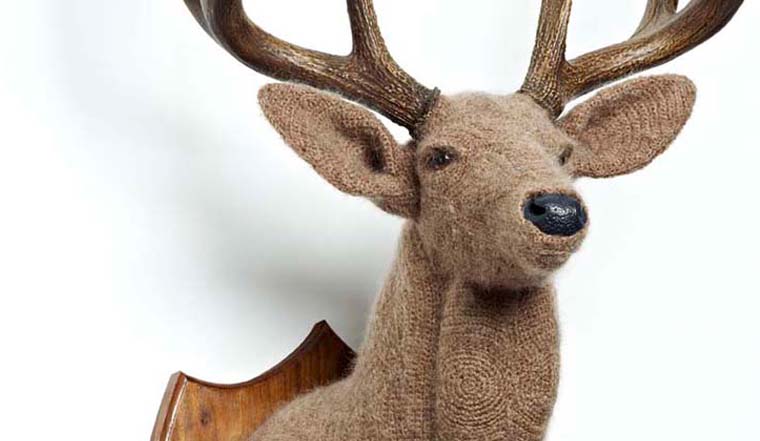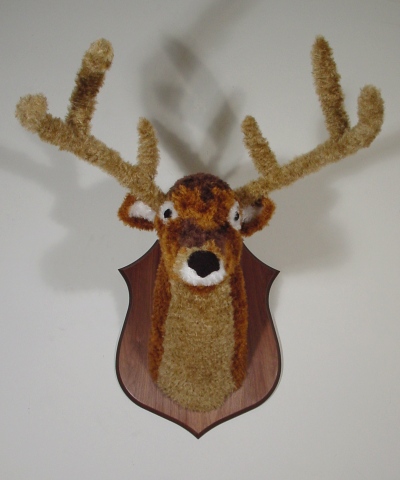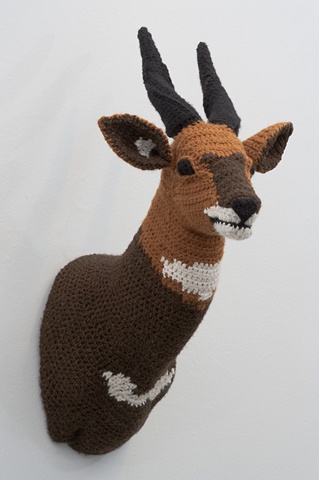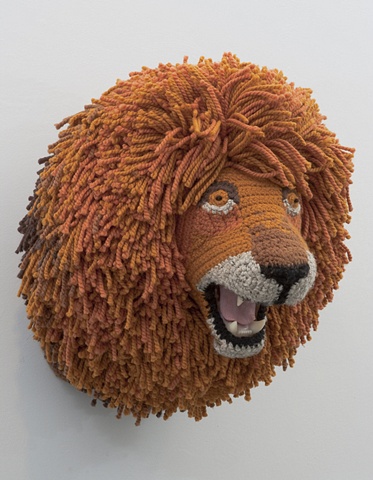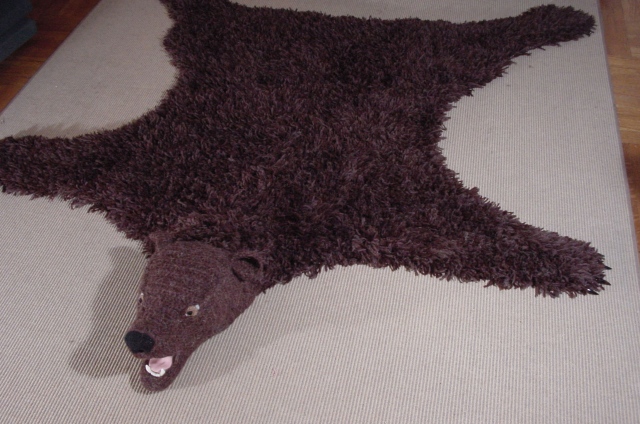I have been reading the book 'In the Loop' by Jessica Hemmings which has a collection of essays on contemporary knitting and art and how it is re-thought. This helps my research as it is looking at the critical theory of knitting and the use of photography with it. Although I am an image maker and know the readings on Barthes and Benjamin I believe the theory that needs to be addressed in my images is that of the hand made. If I were shooting for a fashion or textile student then the ideas would be different as they would of had pre-concieved notions on what their pieces were about. Here I am the prop maker, like with the paper dresses, I am the one using my hands to produce and create something of value to the shoot.
With my work I generally find a variety of thing that I am interested in and then strip it back so the things all play influence in the work, however they may not be acknowledged by the viewer or it will just look like a jumble. Here my main ones are:
Hunting: the issue of vanity vs animal welfare
The use of craft in contemporary art
Hyper realist techniques
These seem like very broad topics with my work, yet to my work it boils down to
The Peta campaigns and my views on hunting and the current laws surrounding it.
Artists like Shuana Richardson
And Erwin Olafs photographic style/the style I have been building in throughout my project.
 |
| Margi Geerlinks |
So with this post I am looking at the craft in arts and some examples and quotes led from the book.
"Knitting is now a medium and even a reference of choice for many contemporary artists" Hemmings, J (2010, p11)
The photo featured above is by Margi Geerlinks, the essay by Clio Padovani and Paul Whittaker 'Twists, Knots and Holes: Collecting The Gaze and Knitting the Impossible' talks about the use of knitting in art and deconstructs the image.
"The pictorial alliance of a woman, child and the practice of knitting might conventionally suggest a content of mother hood and the familial. In this image however, these alliances, arranged around the partial form of the knitted body, appear not familial but monstrous. The act of creation, rendered inert by the photograph, appears here more self-driven than a selfless act of life giving; more Dr Frankenstein than a Madonna and Child."
I think the quote here brings up a very good point, there is something very wrong when you look at this. There is that initial shock of seeing a naked child held up by knitting needles by this strange looking woman. It is not a traditional image of a mother and child and that is the point it is trying to make. What is interesting to me is that is is a photograph, rather than an exhibition or fashion collection it is a still, constructed photograph.
"the act of knitting might reasonably include the practice of collecting; knitting as the collection and construction of narratives-narratives in which the artist is a primary factor, but not always necessarily, the creator of disturbing tales"
Another quote used to describe the work talks about collecting, Susan Steward's theory on how objects in museums "meditate experience in time and space". From here it becomes a little complicated and I think I am beginning to understand the theory. I think it does come away a little from what I am trying to explore with my work.
What is interesting is this section of the essay:
"It is the [hole] in the subject's seemingly omnipotent look": a gap that "marks the spot at which our desire manifest itself in what we see".
"The gaze is the cause of desire rather than the object towards which desire tends and as such it is a hole that sets the drives in motion"
Looking at 'Narrative Knits' it writes about knitting
"It is often used to navigate grief, disappointment or loss, as it does a romantic return to the soothing rhythms of working with our hands"
I believe looking at the reasons behind why we knit are part of the critical frame work of my images. Like all my photography work I can say it is personal because I make it for me (and the university), however can I truly say that? Being on a commercial course ensures boundaries of industry context and suddenly in our third year I have to start re-considering the critical side? My work cannot connote as deeper meaning as Margi Geerlinks, it has no obvious link to the woman who taught me to knit or the reasons behind it. I can identify with this quote because it was through troubled circumstances that I picked up the needles. Does that mean any use of knitting in my life relates back to that struggle? Everything we do in life is personal, but also relates back to the theories of culture and what makes us apart of that culture.
My work sits on almost three cultures, the stereotype of hunting, my new formed bonds with the knitting community and the pre-concieved style of my image making. I belong to two groups and then have a view on an English Tradition. On a critical level where does my work stand?
A lot of knitted art does rely on nostalgia, such as the work Alter Egos by Mark Newport. The work he creates is incredible, life size costumes that would fit him, some based on the jumpers his mother made him when he was a child. They deal with the issues of masculinity which link to childhood memories making them incredibly interesting objects.
"these pieces start to explore the alter ego within the costume and the connotations of knitting in relation to various roles and activities" Newport, M (2010, p46)
Although this post is a little all over the place it does give me a chance to just explore some of these knitters in fine art. Shauna Richardson's work is based on the idea anything can be art, Margi Geerlink looks at creation and relationships and Mark Newport is based on his mother and his childhood.
The art we make is always based on something personal, if it wasn't what would be the point. Our tutors at uni say that you see a little bit of the person through the photograph and that is the discourse I musts discover to really understand the theory of why I have made these photo and why I have chosen to knit the props.
Bibliography
Hemmings, Jessica. (2010). In the Loop. London: Black Dog Publishing













